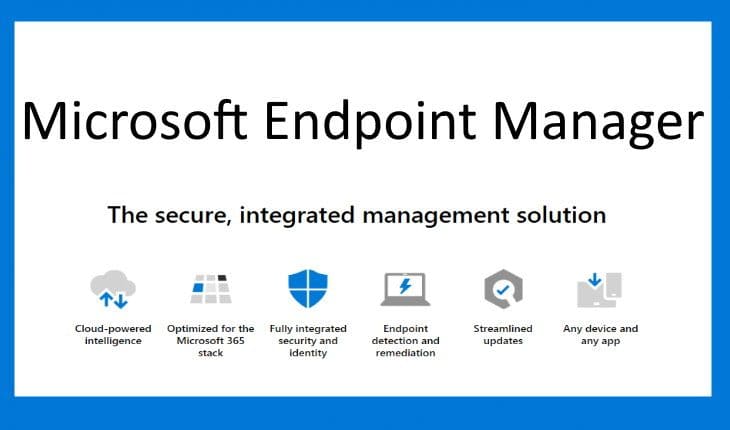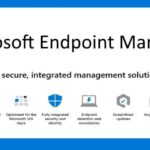Configuration Manager 2005 技术预览.
现在,您可以从 Microsoft Endpoint Management 管理中心为租户连接的设备实时启动应用程序安装. Helpdesk users can initiate real-time queries and run PowerShell scripts from the cloud against an individual Configuration Manager managed device and return the results to the admin center. 此外, 您现在可以看到事件时间表,显示设备上过去的活动,可以帮助您解决每个设备的问题.
租户附加: 管理中心中的设备时间线
When Configuration Manager synchronizes a device to Microsoft Endpoint Manager through tenant attach, 您现在可以看到事件的时间表. 此时间线显示设备上过去的活动,可以帮助您解决问题.
租户附加: 从管理中心安装应用程序
现在,您可以从 Microsoft Endpoint Management 管理中心为租户连接的设备实时启动应用程序安装.
租户附加: 来自管理中心的 CMPivot
将 CMPivot 的强大功能引入 Microsoft Endpoint Manager 管理中心. 允许额外的角色, 像服务台, to be able to initiate real-time queries from the cloud against an individual ConfigMgr managed device and return the results back to the admin center. 这提供了 CMPivot 的所有传统优势, 它使 IT 管理员和其他指定角色能够快速评估其环境中的设备状态并采取行动.
租户附加: 从管理中心运行脚本
Bring the power of the Configuration Manager on-premises Run Scripts feature to the Microsoft Endpoint Manager admin center. 允许额外的角色, 像服务台, to run PowerShell scripts from the cloud against an individual Configuration Manager managed device. This gives all the traditional benefits of PowerShell scripts that have already been defined and approved by the Configuration Manager admin to this new environment.
VPN边界类型
简化远程客户端的管理, 您现在可以为 VPN 创建新的边界类型.
Previously, 您必须根据 IP 地址或子网为 VPN 客户端创建边界. 由于子网配置或 VPN 设计,此配置可能具有挑战性或不可能.
现在当客户端发送位置请求时, 它包含有关其网络配置的附加信息. 根据此信息, 服务器确定客户端是否在 VPN 上. All clients that connect through a VPN automatically belong to the boundary group associated with this new boundary type.
软件中心中的 Azure AD 身份验证
This release fixes an issue with Software Center and Azure Active Directory (Azure AD) authentication. 对于检测为在内网但通过云管理网关通信的客户端 (CMG), previously Software Center would use Windows authentication. 当它尝试获取用户可用应用程序的列表时, 它会失败. It now uses Azure Active Directory (Azure AD) identity for devices joined to Azure AD. 这些设备可以通过云连接或混合连接.
在按流量计费的连接上安装和升级客户端
Previously, 如果设备已连接到按流量计费的网络, 新客户端无法安装. 仅当您允许所有客户端通信时,现有客户端才会升级. 对于经常在按流量计费的网络上漫游的设备, 它们将不受管理或使用较旧的客户端版本. 从此版本开始, 当您设置客户端设置时,客户端安装和升级都会起作用 按流量计费的互联网连接上的客户端通信 to 允许.
定义新客户端安装的行为, 有一个新的 ccmsetup 参数 /允许计量. 当您允许 ccmsetup 在计量网络上进行客户端通信时, 它下载内容, 在网站上注册, 并下载初始策略. 任何进一步的客户端通信都遵循该策略中客户端设置的配置.
对基于云的内容的任务序列媒体支持
尽管现在有更多的远程设备需要管理, 您可能仍然有使用任务序列媒体恢复设备的业务流程. For example, 您将 USB 密钥发送给远程用户以重新映像其设备. Or a remote office that has a local PXE server, 但设备主要通过互联网连接到您的主网络. Instead of further taxing the VPN to download large OS deployment content, boot media and PXE deployments can now get content from cloud-based sources. For example, 云管理网关 (CMG) 您可以共享内容.
云管理网关 cmdlet 的改进
现在越来越多的客户管理远程设备, this release includes several new and improved Windows PowerShell cmdlets for the cloud management gateway (CMG). 您可以使用这些 cmdlet 来自动创建, configuration, and management of the CMG service and Azure Active Directory (Azure AD) requirements.
For example, an Azure administrator first creates the two required apps in Azure Active Directory (Azure AD). 然后编写一个使用以下 cmdlet 的脚本来部署 CMG:
- 导入-CMAADServerApplication: Create the Azure AD server app definition in Configuration Manager.
- 导入-CMAADClientApplication: Create the Azure AD client app definition in Configuration Manager.
- Use 获取 CMAADApplication 获取应用程序对象, 然后传递给 新-CMCloudManagementAzureService to create the Azure service connection in Configuration Manager.
- 新-CMCloud管理网关: 在 Azure 中创建 CMG 服务.
- 添加 CMCloudManagementGatewayConnectionPoint: 创建 CMG 连接点站点系统.
社区中心和 GitHub
IT 管理员社区多年来积累了丰富的知识. 而不是从头开始重新发明脚本和报告等项目, 我们已经建立了一个 Configuration Manager Community hub IT 管理员可以在其中相互共享. 通过利用他人的工作, 您可以节省工作时间. 社区中心通过以他人的工作为基础并让其他人以您的工作为基础来培养创造力. GitHub 已经拥有用于共享的全行业流程和工具. Now, the Community hub will leverage those tools directly in the Configuration Manager Console as foundational pieces for driving this new community. 对于初始版本, 社区中心提供的内容将仅由 Microsoft 上传. Currently, 您无法将自己的内容上传到 GitHub 供社区中心使用.
社区中心支持以下对象:
- PowerShell Scripts
- Reports
- Task sequences
- 应用领域
- 配置项
微软 365 企业应用程序
办公室 365 ProPlus 更名为 Microsoft 365 4 月企业应用 21, 2020. Starting in this technical preview the following changes have been made:
- The Configuration Manager console has been updated to use the new name.
- 此更改还包括 Microsoft 的更新频道名称 365 Apps.
- 控制台中添加了横幅通知,如果一个或多个自动部署规则引用了过时的通道名称,则会通知您 标题 微软的标准 365 应用程序更新.
如果你使用 标题 作为微软的标准 365 自动部署规则中的应用程序更新, 使用下一节来帮助修改它们.
更新 Microsoft 的渠道信息 365 Apps
When Office 365 ProPlus 更名为 微软 365 企业应用程序, 更新频道也被重新命名. 如果您使用自动部署规则来部署更新, 如果您的规则依赖于 标题 财产. 这是因为 Microsoft 更新目录中的更新包名称发生了变化.
Currently, the title of an update package for Office 365 ProPlus 开头为“Office 365 客户端更新”,如下例所示:
办公室 365 客户端更新 – 半年频道版本 1908 适用于基于 x64 的版本 (Build 11929.20648)
对于 6 月及之后发布的更新包 9, 标题将以“Microsoft 365 应用程序更新”,如以下示例所示:
微软 365 应用程序更新 – 半年频道版本 1908 适用于基于 x64 的版本 (Build 11929.50000)
| 新频道名称 | 上一个频道名称 |
|---|---|
| 半年企业频道 | 半年频道 |
| 半年企业频道 (Preview) | 半年频道 (有针对性) |
| 每月企业频道 | 那 |
| 当前频道 | 每月频道 |
| 当前频道 (Preview) | 每月频道 (有针对性) |
| 测试版频道 | 内幕 |
向 Microsoft 报告安装和升级失败
如果安装或更新过程未能成功完成, you can now report the error directly to Microsoft. 如果发生故障, the Report update error to Microsoft 按钮已启用. 当您使用按钮时, 将打开一个交互式向导,允许您向我们提供更多信息. 在技术预览中, 即使设置成功完成,此按钮也始终处于启用状态.
从媒体而不是控制台运行安装程序时, 您还将获得 Report update error to Microsoft 如果安装失败的选项.
Azure AD 应用程序密钥过期通知
根据您的 UserVoice 反馈, 如果您配置 Azure 服务以云连接您的站点, the Configuration Manager console now displays notifications for the following circumstances:
- One or more Azure AD app secret keys will expire soon
- One or more Azure AD app secret keys have expired
BitLocker 任务序列步骤的改进
根据您的 UserVoice 反馈, 您现在可以指定 磁盘加密模式 关于启用 BitLocker 和预配置 BitLocker 任务序列步骤. 这 启用 BitLocker 步骤现在还包括设置 对于没有 TPM 或未启用 TPM 的计算机,请跳过此步骤.
内容库清理工具的改进
If you remove content from a distribution point while the site system is offline, WMI 中可以存在孤立记录. 随着时间的推移, this behavior can eventually lead to a warning status on the distribution point. 删除模式下的内容库清理工具可以从内容库中删除孤立的文件. It can now also remove orphaned content records from the WMI provider on a distribution point.
删除 Windows 期间的命令提示符 10 就地升级
During a task sequence to upgrade a device to Windows 10, during one of the final Windows configuration phases a command prompt window opens. The window is on top of the Windows out-of-box experience (OBE), 用户可以与其交互以中断升级过程. 从此版本开始, the SetupCompleteTemplate.cmd and SetupRollbackTemplate.cmd scripts from Configuration Manager include a change to hide the command prompt window.





















